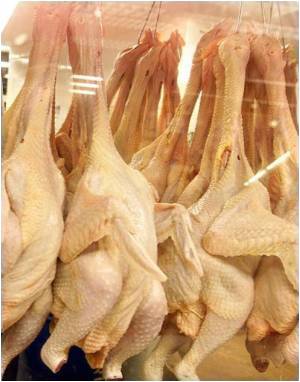A new study has found that plasma zaps can be an effective method for killing harmful bacteria on uncooked poultry that is responsible for outbreaks of foodborne illness.

Plasma, known as the "fourth state of matter" (after solid, liquid and gas), is a high-energy, charged mixture of gaseous atoms, ions and electrons, the Journal of Food Protection reports.
Treating raw meat to remove pathogens before they are cooked and consumed can cut down risk of cross contamination, says senior study author Jennifer Quinlan, assistant professor of food microbiology, Drexel University College of Nursing and Health Professions.
Past studies have shown that plasma could successfully reduce pathogens on the surface of fruits and vegetables without cooking them, according to a Drexel statement.
The value of using plasma "is that it is non-thermal, so there is no heat to cook or alter the way the food looks," said Brian Dirks, graduate student in the Drexel College of Arts and Sciences, who led the study.
Dirks and Quinlan worked with researchers from the Drexel Plasma Institute to test the use of plasma for poultry. Raw chicken samples contaminated with Salmonella enterica and Campylobacter jejuni bacteria were treated with plasma for varying periods of time.
Advertisement
Current plasma technology is expensive relative to the narrow cost margins involved in food production, and the technology is not currently being developed for processing poultry on a large scale.
Advertisement
Source-IANS













